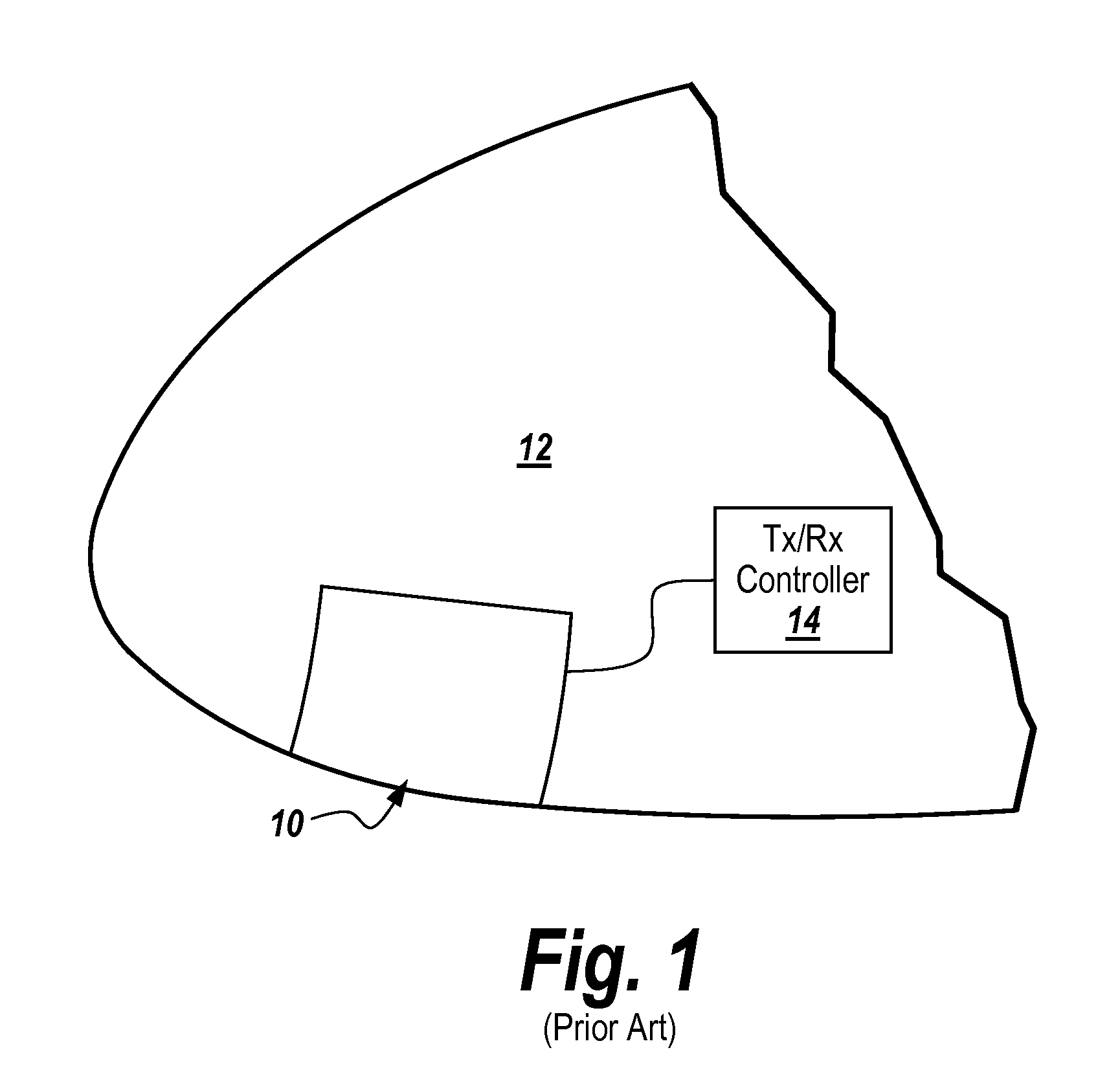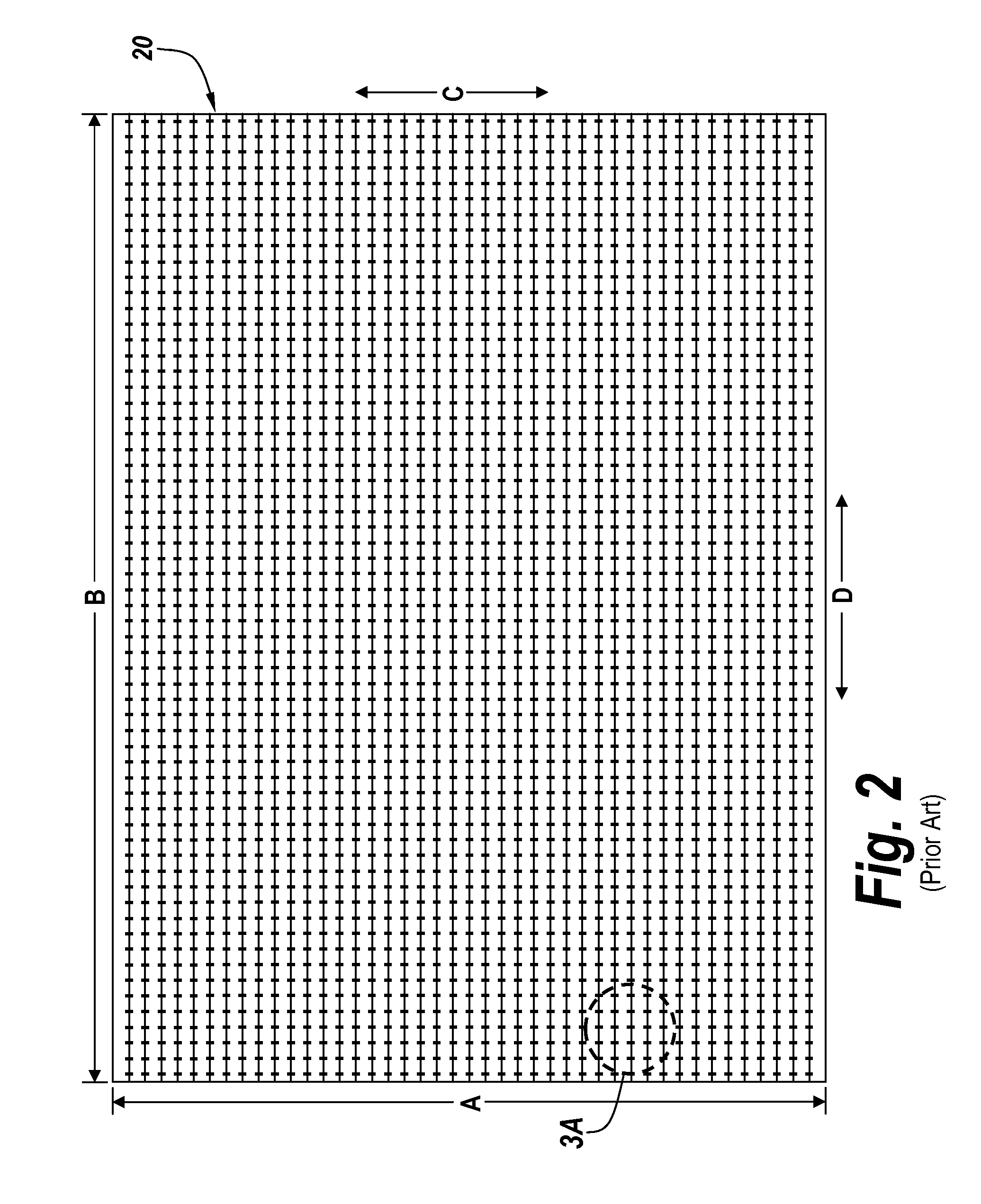Method and apparatus for elimination of duplexers in transmit/receive phased array antennas
a phased array, transmit/receive technology, applied in the field of closeness, can solve the problems of physical inability to place circulators or transmit/receive switches at each of the antenna feeds of dipoles, duplexers in the form of circulators and t/r switches are much too large to be placed at the feedpoint of dipoles, etc., to achieve the effect of simplifying design requirements, allowing flexibility in antenna design, and eliminating bulky and lossy components
- Summary
- Abstract
- Description
- Claims
- Application Information
AI Technical Summary
Benefits of technology
Problems solved by technology
Method used
Image
Examples
Embodiment Construction
[0047]As shown in U.S. Pat. No. 6,512,487, a wideband phased array antenna 10 is mounted to the nose cone of an aircraft 12 or other rigid mounting member having a non-planar three dimensional shape. As shown, the array is connected to a transmit / receive controller 14 for alternately driving the antenna or receiving signals.
[0048]This array is a closely or tightly coupled dipole array such that as shown in FIG. 2 there is a dipole layer 20 which in one embodiment is comprised of a conductive layer having an array of dipole elements printed thereon. As can be seen by the exploded view of FIG. 3 each of the dipole elements 40 includes a feed 42 between adjacent dipole ends 44.
[0049]As shown in FIG. 4, the array requires isolation of the transmitter from the receiver. Here, dipole elements 44 are connected to a circulator 46 which couples transmit element 48 to dipole 44 during a transmit mode, and receive element 50 to the dipole elements during a receive mode. This constitutes one em...
PUM
 Login to View More
Login to View More Abstract
Description
Claims
Application Information
 Login to View More
Login to View More - R&D
- Intellectual Property
- Life Sciences
- Materials
- Tech Scout
- Unparalleled Data Quality
- Higher Quality Content
- 60% Fewer Hallucinations
Browse by: Latest US Patents, China's latest patents, Technical Efficacy Thesaurus, Application Domain, Technology Topic, Popular Technical Reports.
© 2025 PatSnap. All rights reserved.Legal|Privacy policy|Modern Slavery Act Transparency Statement|Sitemap|About US| Contact US: help@patsnap.com



